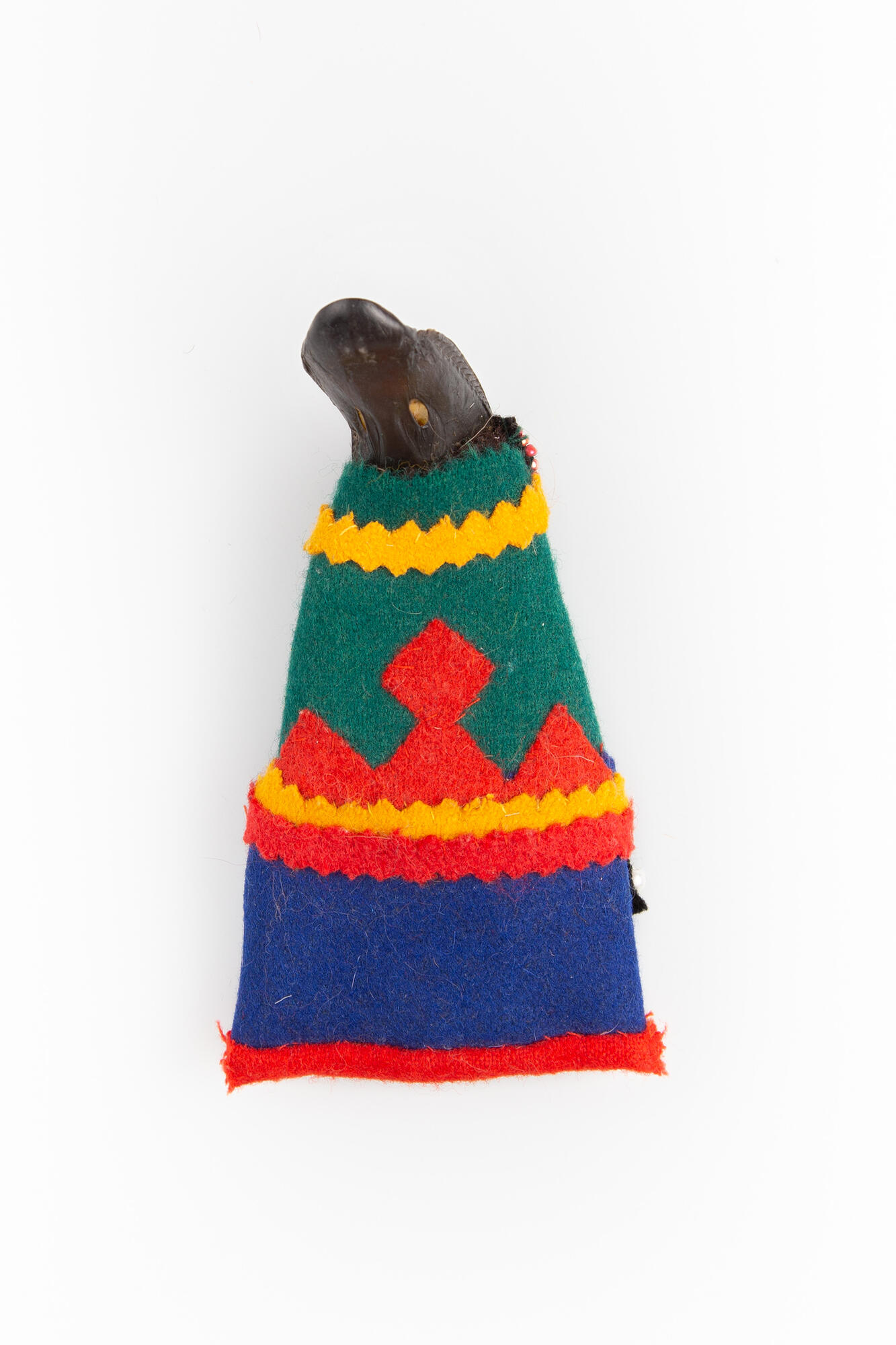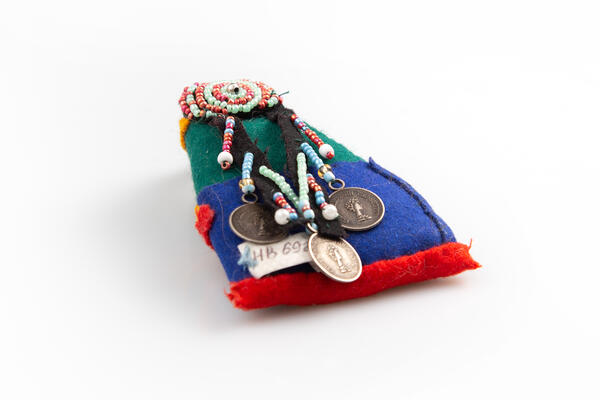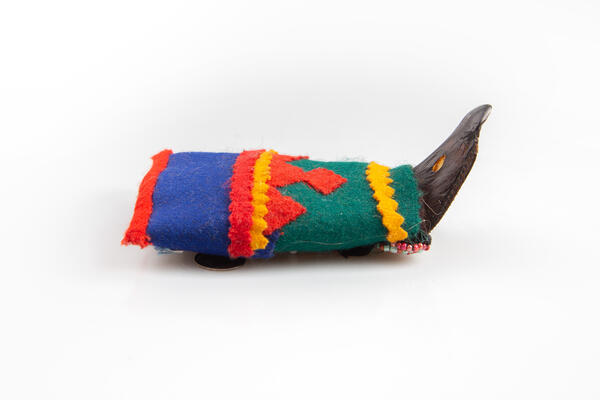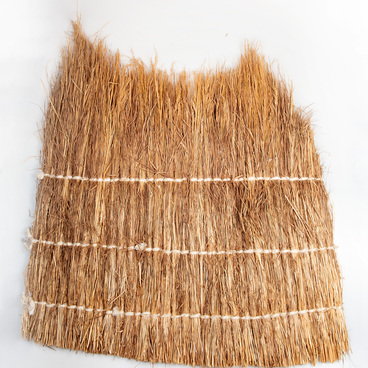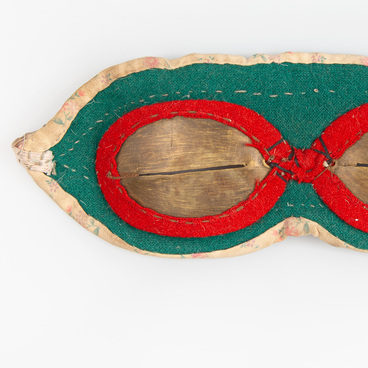A nuhuko is a traditional Nenets toy. The custom of making dolls is associated with the historical past of the people, their worldview, way of life and spiritual values. A nuhuko doll is made from the upper portion of a bird’s bill. A male doll is made from a goose’s beak, and a female doll — from a duck’s beak. The beak of small waterfowl is used to make “children” dolls. The image of a duck is associated with the mythology of the northern tribes. Legend has it that the world arose from a pinch of earth, which was raised by a duck from the bottom of the oceans, and the first two supreme gods appeared from the duck’s eggs. The duck has always been a symbol of female power, childbearing, family and purity, because every year the bird flew away to the god Num.
The body of the nuhuko doll is made of a piece of fabric, tied with a ribbon to the base of the beak. Nuhuko dolls have neither arms nor legs. The Nenets were afraid to draw the eyes: they believed that then the doll would begin to see, come to life and take the child’s soul. The doll’s clothes are also subject to the ritual: the number of multi-colored ribbons should be odd. A female doll also gets braids that are made from laces or beads. From an early age, Nenets girls are taught to cut out doll outfits, sew them together and choose appropriate decorative elements. The girls receive help from their mothers, older sisters or grandmothers and prepare for their future role of homemakers, who have to sew clothes and shoes for a large family.
Over time, a child accumulated a whole family of dolls: adults, children of different ages, and old people. The clothes on the dolls looked like the ones that the Nenets wore themselves. Apart from clothes, doll families had their own tent, boat, kitchen utensils, household and deer. All this was made from fish vertebrae, birch bark and other natural materials. When an adult girl got married and brought her large doll family with accessories to a new home, this was a good sign that promised many children and well-being.
In the 21st century, the Nenets people carefully preserve the traditions of their national art. They use the doll to convey spiritual strength, national wealth and faith to children. Nuhuko dolls reflect the Nenets lifestyle and traditional crafts, and prepare children for the future life. Today, the nuhuko is replaced by factory-made toys and becomes a rare collectible item. However, artisans continue to make nuhuko dolls according to old technologies, and Nenets children dress new dolls in traditional northern costumes.
The body of the nuhuko doll is made of a piece of fabric, tied with a ribbon to the base of the beak. Nuhuko dolls have neither arms nor legs. The Nenets were afraid to draw the eyes: they believed that then the doll would begin to see, come to life and take the child’s soul. The doll’s clothes are also subject to the ritual: the number of multi-colored ribbons should be odd. A female doll also gets braids that are made from laces or beads. From an early age, Nenets girls are taught to cut out doll outfits, sew them together and choose appropriate decorative elements. The girls receive help from their mothers, older sisters or grandmothers and prepare for their future role of homemakers, who have to sew clothes and shoes for a large family.
Over time, a child accumulated a whole family of dolls: adults, children of different ages, and old people. The clothes on the dolls looked like the ones that the Nenets wore themselves. Apart from clothes, doll families had their own tent, boat, kitchen utensils, household and deer. All this was made from fish vertebrae, birch bark and other natural materials. When an adult girl got married and brought her large doll family with accessories to a new home, this was a good sign that promised many children and well-being.
In the 21st century, the Nenets people carefully preserve the traditions of their national art. They use the doll to convey spiritual strength, national wealth and faith to children. Nuhuko dolls reflect the Nenets lifestyle and traditional crafts, and prepare children for the future life. Today, the nuhuko is replaced by factory-made toys and becomes a rare collectible item. However, artisans continue to make nuhuko dolls according to old technologies, and Nenets children dress new dolls in traditional northern costumes.
